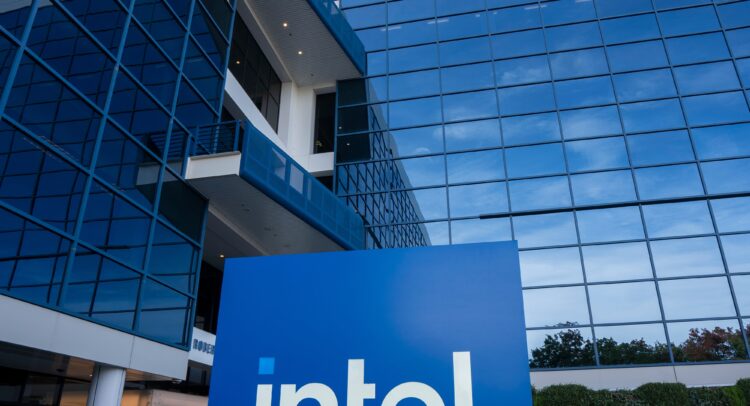Sometimes, we get some really good commentary sent our way from our various alert readers, and they raise points that we would love to analyze more closely, if it were not for all the news coming out we need to cover. One comment in particular came our way about chip stock Intel (INTC), and pointed out that one of Intel’s biggest problems right now is its substantial quantity of middle management, and the impact that can have on cash flow.
After the recent remarks delivered from newly-minted CEO Lip-Bu Tan, it became clear that our readership was not the only force out there that caught onto Intel’s problems. Thus, we take a look at the three-fold likely path to victory for Intel.
Pare Down the Management Class
When the CEO gets up and says that “bureaucracy kills innovation,” it is a move somewhere between dynamic and horrifying in its hypocrisy. After all, the CEO is pretty much the personification of bureaucracy in any company. So for the CEO to declare that bureaucracy kills innovation suggests either tone-deafness on a scale to make William Hung cringe, or a shocking level of self-awareness.
Here, we will assume that it is self-awareness that prompted these remarks. And some reports suggest that there is indeed a whole lot of middle management at Intel. One report noted that there are “four to five useless middle management layers who just ask status and report status…” If that is the case—and of course, there is little official word about how much middle management a company has—it could not only represent a major opportunity for streamlining, but also a serious potential boost to Intel’s cash flow.
A look at middle-level salaries makes that point clear. A Grade 3 software engineer, for example, makes $117,000 per year at Intel, on average, noted one report. Meanwhile, a Grade 7 gets $191,000. While these numbers may not translate well into managers, the idea that a manager might get the same, or more, than an engineer would make sense, and that means that even five managers making the same as a Grade 7 engineer means about a million bucks back in Intel’s coffers.
Win Back the End User
We also know that Intel has been suffering from a general decline in the products market, as it loses ground to competitors like Advanced Micro Devices (AMD) and Nvidia (NVDA). Leave aside the ground it has lost in places like artificial intelligence; Intel has also been losing ground in the data center as well.
Intel needs to get this formerly bread-and-butter operation back under control. That kind of reliable, regular cash flow will contribute to a major turnaround at Intel. The obvious way to get that back is with innovation. If Lip-Bu Tan’s assessment proves true, then the paring back of middle management, coupled with some judicious re-hiring from the engineer class, should allow for those kinds of products to be produced once more.
Do Something—Anything!—With the Foundry
Intel has been pouring cash into its foundry operations for months now, with, well, let’s call them “mixed” results. In order to truly turn things around at Intel, it is going to have to start producing chips on a large scale. That in turn depends on several moving parts to activate properly, like the 18A process, and some sales processes as well. Reports suggest that the sales part is going well for Intel—it already has a couple deals with Amazon (AMZN) and Microsoft (MSFT) at last report. But it will likely need more than that to truly make its foundry anything more than an expensive flash in the pan.
Getting Taiwan Semiconductor (TSM) on its side on that front with the still-nascent joint venture may be a huge help on that end, assuming it actually goes off, and goes as well as it might. Though given yesterday’s reports that there is no such joint venture in place, the chances of that actually happening may be a bit of a long shot.
Is Intel a Buy, Hold or Sell?
Turning to Wall Street, analysts have a Hold consensus rating on INTC stock based on one Buy, 27 Holds and four Sells assigned in the past three months, as indicated by the graphic below. After a 44.08% loss in its share price over the past year, the average INTC price target of $23 per share implies 21.5% upside potential.

















